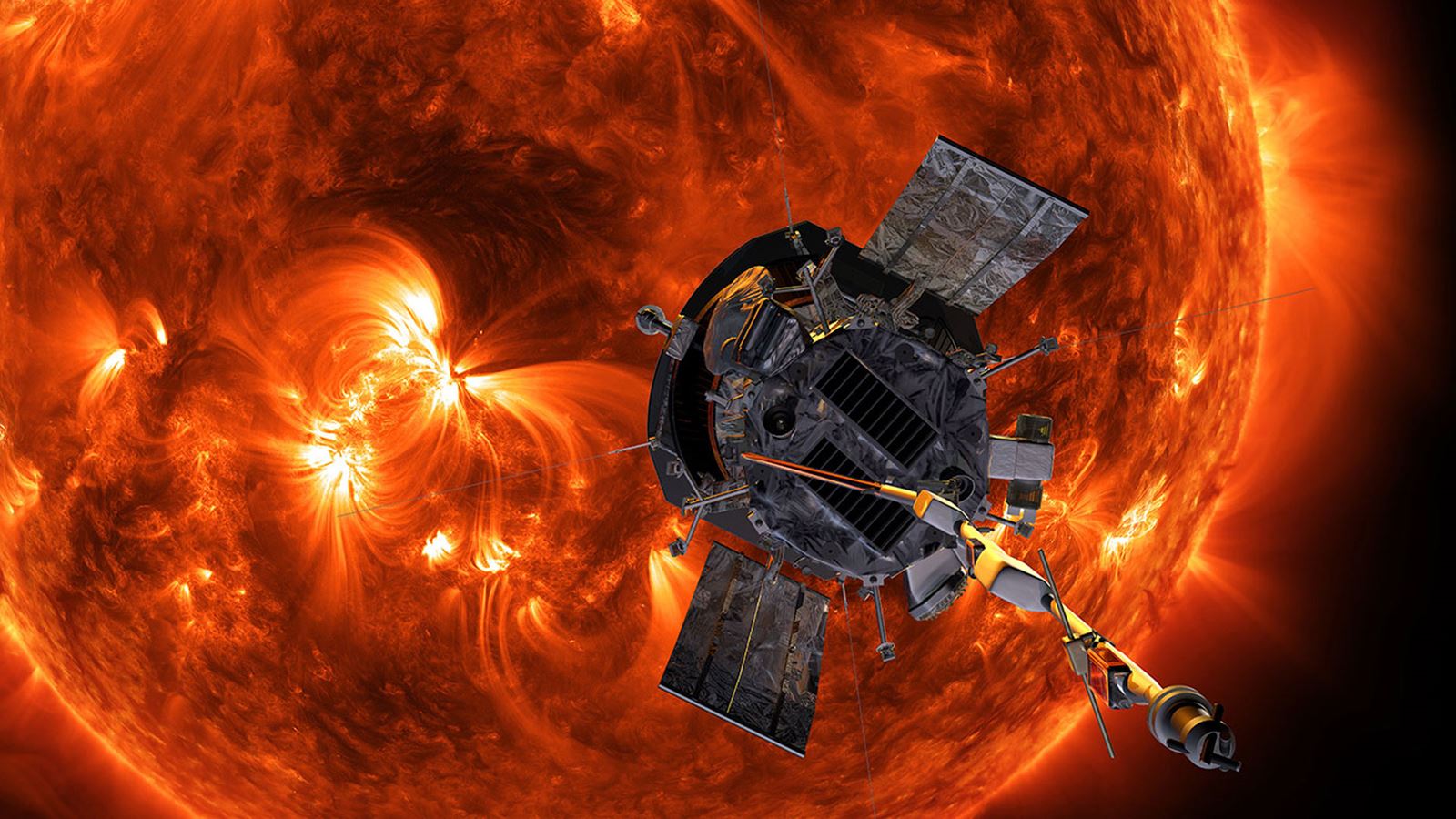Al Killeffer
Power & Controls
Sustainability

Illustration of NASA’s Parker Solar Probe approaching the Sun. Credits: NASA/Johns Hopkins APL/Steve Gribben
NASA’s Parker Solar Probe team, with about 70 employees from Collins Aerospace Systems, recently took home the 2018 Neil Armstrong Space Flight Achievement Award.
About the size of a small car, the Parker Solar Probe launched from Cape Canaveral Air Force Station aboard a Delta IV-Heavy rocket on Aug. 12, 2018. Three months later, it became the closest spacecraft to the Sun when it passed within 15 million miles of the largest object in the solar system, thanks in part to the active thermal control system designed and developed by Collins Aerospace engineers.
According to Darren Samplatsky, program manager for the active thermal control system at Collins Aerospace, the Parker Solar Probe was designed, built, and is operated for NASA by the Johns Hopkins Applied Physics Laboratory in Laurel, Maryland. Collins Aerospace is a member of that team and our technology helped enable the mission NASA had been working toward since the agency’s inception 60 years ago.
“Our team architected a lightweight, low-power consumption active thermal control system to cool down the solar arrays,” explained Darren, noting the Sun’s surface is about 10,000 degrees Fahrenheit. The Sun’s atmosphere, or corona, which the spacecraft will fly through, reaches more than one million degrees Fahrenheit. “This system ensures that the electric power generating solar arrays are always operated in the safe temperature range.”
Given by the American Astronautical Society at its 57th Robert H. Goddard Memorial Symposium in Silver Spring, Maryland, the Neil Armstrong Space Flight Achievement Award recognizes outstanding achievements as a crew, crew member or team.
Al Killeffer
Power & Controls
Sustainability
Joel Girdner
Interior Systems
Hervé Tilloy
Europe and the Middle East
JB Brindle
Avionics
Connected Aviation Solutions
Linus Terh
Asia Pacific
Liz Maddy
Mission Systems
Lori O'Donley
Advanced Structures
Erin Callender
Director, Global Media Relations